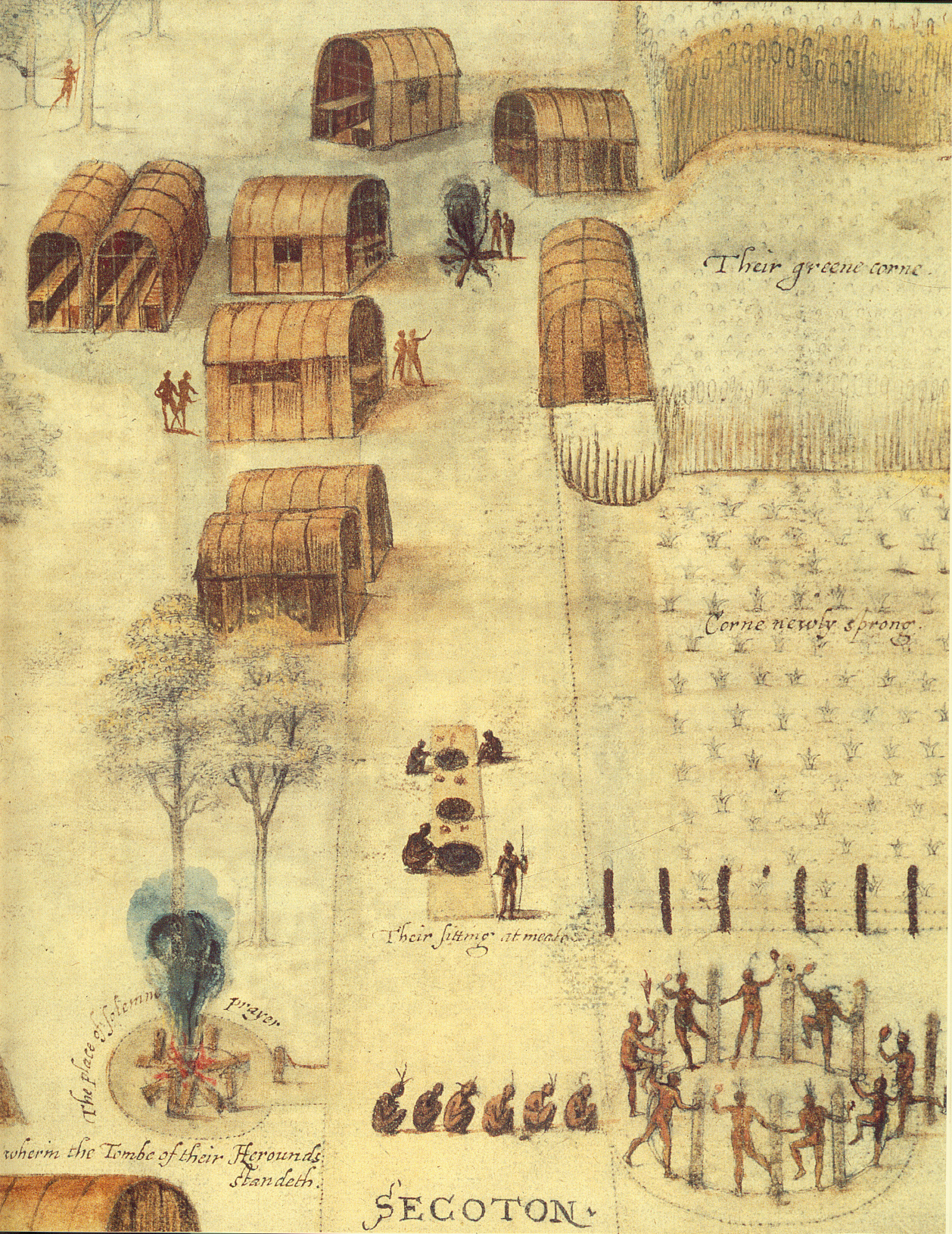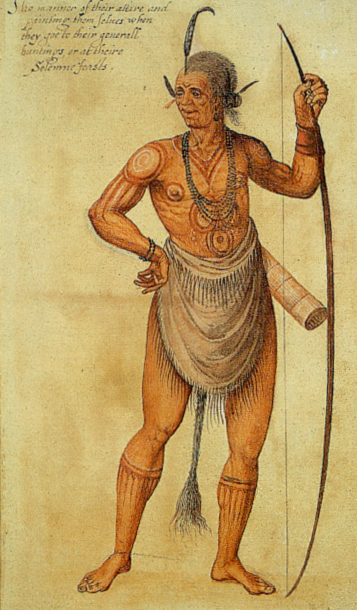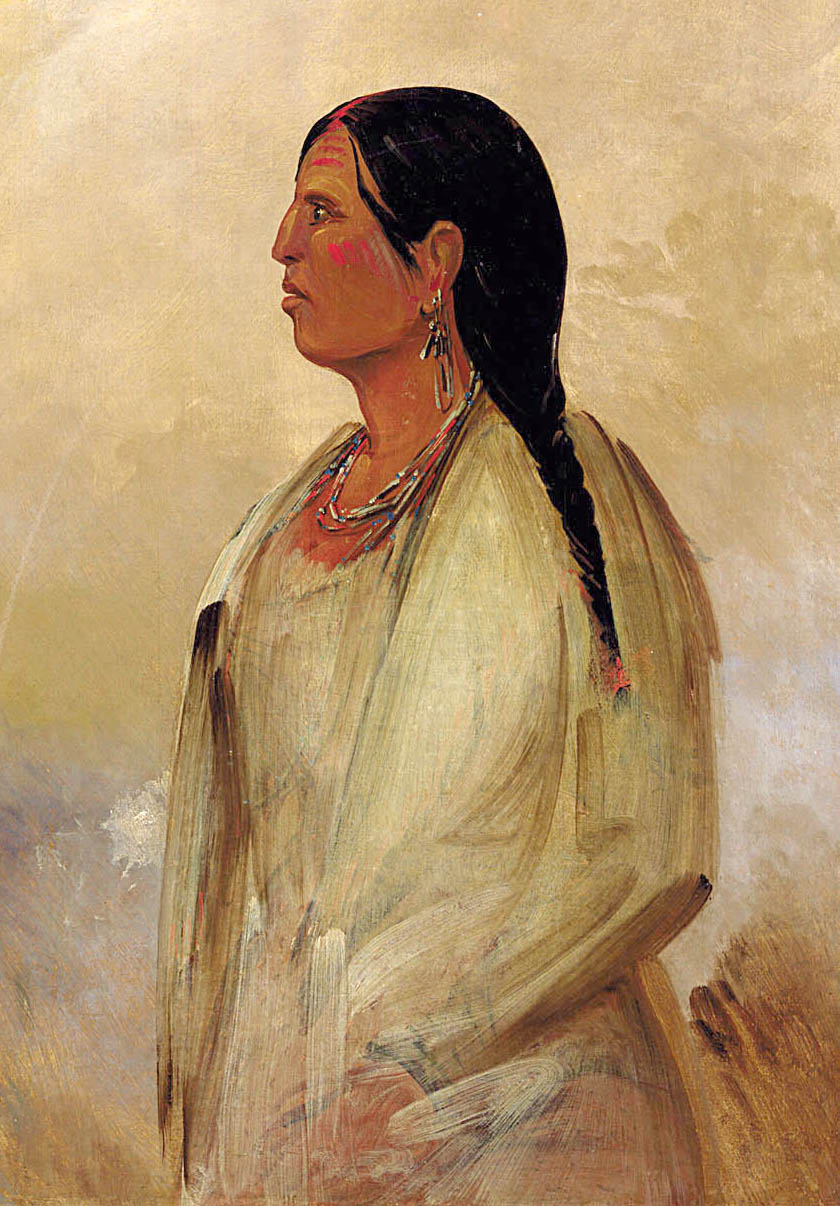|
Dasamongueponke
The Dasamongueponke (or Dasamonguepeuk) is the name given to a Native American tribe of Secotan people and also the name of a village encountered by the English during their late 16th century attempts to settle and establish permanent colonies in what is now North Carolina, known at the time as Virginia. Together with the rest of Secotan people they formed a part of the Native American group known as the Carolina Algonquian Indians, and spoke the now extinct Carolina Algonquian language. Dasamongueponke in Carolina Algonquin means "where the extended land is surrounded by water. Roanoke colony Sir Richard Grenville was the leader of the 1585 expedition which first attempted to land English settlers on Roanoke island. When war between the Secotan and the English began, King Wingia used the village as his base of operations to attack the colony. When Grenville left Roanoke, he left behind fifteen men, battle-hardened soldiers. When Governor John White ret ... [...More Info...] [...Related Items...] OR: [Wikipedia] [Google] [Baidu] |
John White (colonist And Artist)
John White () was an English colonial governor, explorer, artist, and cartographer. White was among those who sailed with Richard Grenville in the first attempt to colonize Roanoke Island in 1585, acting as artist and mapmaker to the expedition. He would most famously briefly serve as the governor of the second attempt to found Roanoke Colony on the same island in 1587 and discover the colonists had mysteriously vanished. During his time at Roanoke Island he made several watercolor sketches of the surrounding landscape and the native Algonkin peoples. These works are significant as they are the most informative illustrations of a Native American society of the Eastern seaboard; the surviving original watercolors are now preserved in the print room of the British Museum. In 1587, White became governor of Sir Walter Raleigh's failed attempt at a permanent settlement on Roanoke Island, known to history as the "Lost Colony". This was the earliest effort to establish a perm ... [...More Info...] [...Related Items...] OR: [Wikipedia] [Google] [Baidu] |
Aquascogoc
The Aquascogoc is the name given to a Native American tribe of Secotan people and also the name of a village encountered by English colonists during their late 16th century attempts to settle and establish permanent colonies in what is now North Carolina, known at the time as Virginia. Together with the rest of Secotan people they formed a part of the Native American group known as the Carolina Algonquian Indians, and spoke the now extinct Carolina Algonquian language. In 1585 the village of Aquascogoc was burned by Sir Richard Grenville, in retaliation for the alleged theft of a silver drinking vessel. Roanoke colony Sir Richard Grenville was the leader of the 1585 expedition which first attempted to land English settlers on Roanoke island. Guided by Chief Manteo, Grenville arrived at the village but the inhabitants showed little inclination to meet with him, and the settlers soon returned to their boats. However, a silver drinking cup was found to be missing, and was believ ... [...More Info...] [...Related Items...] OR: [Wikipedia] [Google] [Baidu] |
Secotan
The Secotans were one of several groups of American Indians dominant in the Carolina sound region, between 1584 and 1590, with which English colonists had varying degrees of contact. Secotan villages included the Secotan, Aquascogoc, Dasamongueponke, Pomeiock (Pamlico) and Roanoac. Other local groups included the Chowanoke (including village Moratuc), Weapemeoc, Chesapeake, Ponouike, Neusiok, and Mangoak (Tuscarora), and all resided along the banks of the Albemarle and Pamlico sounds. They spoke Carolina Algonquian language, an Eastern Algonquian language. Background In the Carolinas, colonization did not exist as a straight-line transition, from Native American to European rule. A rivalry marked the relationship between the two European powers, the English and the Spanish. Rivalries also existed between the Native American groups. Additionally, the Europeans often found themselves caught in the middle of conflicts, which existed between Native American groups. Each grou ... [...More Info...] [...Related Items...] OR: [Wikipedia] [Google] [Baidu] |
Carolina Algonquian Language
Carolina Algonquian (also known as Pamlico, Croatoan) was an Algonquian languages, Algonquian language of the Eastern Algonquian subgroup formerly spoken in North Carolina, United States. Carolina Algonquian was formerly spoken by Secotan (later known as Machapunga), Chowanoke and Weapemeoc Indians, Weapemeoc (subgroups Poteskeit and Paspatank) peoples. Translation into English In 1584 Sir Walter Raleigh had dispatched the first of a number of expeditions to Roanoke Island to explore and eventually settle the New World. Early encounters with the natives were friendly, and, despite the difficulties in communication, the explorers were able to persuade "two of the savages, being lustie men, whose names were Wanchese (chief), Wanchese and Manteo (Croatan), Manteo" to accompany them on the return voyage to London, in order for the English people to report both the conditions of the New World that they had explored and what the usefulness of the territory might be to the English Once ... [...More Info...] [...Related Items...] OR: [Wikipedia] [Google] [Baidu] |
Wingina
Wingina ( – 1 June 1586), also known as Pemisapan, was a Secotan weroance who was the first Native American leader to be encountered by English colonists in North America. During the late 16th century, English explorers Philip Amadas and Arthur Barlowe explored the region inhabited by Wingina, detailing conflicts between Wingina's tribe, the Secotan and a rival tribe known as the Neusiok. When English colonization of the region began, relations between the colonists and the Secotan quickly broke down. On 1 June 1586, in an effort to gain more stocks of food for the fledgling colony, Sir Ralph Lane led an unprovoked attack on the Secotan; Wingina was decapitated during the attack by one of Lane's men. Life Before the first English settlement on Roanoke Island, Philip Amadas and Arthur Barlowe explored the area (April 27, 1584) on behalf of Raleigh, who had received an English charter to establish a colony a month earlier. During their expedition, Barlowe took detailed notes r ... [...More Info...] [...Related Items...] OR: [Wikipedia] [Google] [Baidu] |
Roanoke Island
Roanoke Island () is an island in Dare County, North Carolina, Dare County, bordered by the Outer Banks of North Carolina, United States. It was named after the historical Roanoke (tribe), Roanoke, a Carolina Algonquian people who inhabited the area in the 16th century at the time of British colonization of the Americas, English colonization. About long and wide, the island lies between the mainland and the Outer Banks, barrier islands near Nags Head, North Carolina, Nags Head. Albemarle Sound lies on its north, Roanoke Sound on the eastern, Croatan Sound on the west, and Wanchese, North Carolina, Wanchese census-designated place, CDP lies at the southern end. The town of Manteo, North Carolina, Manteo is located on the northern portion of the island, and is the county seat of Dare County. Fort Raleigh National Historic Site is on the north end of the island. The island has a land area of and a population of 6,724 as of the United States Census, 2000, 2000 census. Today U.S. Hi ... [...More Info...] [...Related Items...] OR: [Wikipedia] [Google] [Baidu] |
Native Americans In The United States
Native Americans, also known as American Indians, First Americans, Indigenous Americans, and other terms, are the Indigenous peoples of the mainland United States ( Indigenous peoples of Hawaii, Alaska and territories of the United States are generally known by other terms). There are 574 federally recognized tribes living within the US, about half of which are associated with Indian reservations. As defined by the United States Census, "Native Americans" are Indigenous tribes that are originally from the contiguous United States, along with Alaska Natives. Indigenous peoples of the United States who are not listed as American Indian or Alaska Native include Native Hawaiians, Samoan Americans, and the Chamorro people. The US Census groups these peoples as " Native Hawaiian and other Pacific Islanders". European colonization of the Americas, which began in 1492, resulted in a precipitous decline in Native American population because of new diseases, wars, ethni ... [...More Info...] [...Related Items...] OR: [Wikipedia] [Google] [Baidu] |
Native American History Of North Carolina
Native may refer to: People * Jus soli, citizenship by right of birth * Indigenous peoples, peoples with a set of specific rights based on their historical ties to a particular territory ** Native Americans (other) In arts and entertainment * Native (band), a French R&B band * Native (comics), a character in the X-Men comics universe * ''Native'' (album), a 2013 album by OneRepublic * ''Native'' (2016 film), a British science fiction film * ''The Native'', a Nigerian music magazine In science * Native (computing), software or data formats supported by a certain system * Native language, the language(s) a person has learned from birth * Native metal, any metal that is found in its metallic form, either pure or as an alloy, in nature * Native species, a species whose presence in a region is the result of only natural processes Other uses * Northeast Arizona Technological Institute of Vocational Education (NATIVE), a technology school district in the Arizona portion of ... [...More Info...] [...Related Items...] OR: [Wikipedia] [Google] [Baidu] |
Eastern Algonquian Peoples
Eastern may refer to: Transportation *China Eastern Airlines, a current Chinese airline based in Shanghai * Eastern Air, former name of Zambia Skyways *Eastern Air Lines, a defunct American airline that operated from 1926 to 1991 *Eastern Air Lines (2015), an American airline that began operations in 2015 *Eastern Airlines, LLC, previously Dynamic International Airways, a U.S. airline founded in 2010 *Eastern Airways, an English/British regional airline *Eastern Provincial Airways, a defunct Canadian airline that operated from 1949 to 1986 *Eastern Railway (other), various railroads * Eastern Avenue (other), various roads *Eastern Parkway (other), various parkways *Eastern Freeway, Melbourne, Australia *Eastern Freeway Mumbai, Mumbai, India *, a cargo liner in service 1946-65 Education *Eastern University (other) * Eastern College (other) Other uses * Eastern Broadcasting Limited, former name of Maritime Broadcasting System, Canad ... [...More Info...] [...Related Items...] OR: [Wikipedia] [Google] [Baidu] |
Indigenous Peoples Of The Southeastern Woodlands
Indigenous peoples of the Southeastern Woodlands, Southeastern cultures, or Southeast Indians are an ethnographic classification for Native Americans who have traditionally inhabited the area now part of the Southeastern United States and the northeastern border of Mexico, that share common cultural traits. This classification is a part of the Eastern Woodlands. The concept of a southeastern cultural region was developed by anthropologists, beginning with Otis Mason and Frank Boas in 1887. The boundaries of the region are defined more by shared cultural traits than by geographic distinctions.Jackson and Fogelson 3 Because the cultures gradually instead of abruptly shift into Plains, Prairie, or Northeastern Woodlands cultures, scholars do not always agree on the exact limits of the Southeastern Woodland culture region. Shawnee, Powhatan, Waco, Tawakoni, Tonkawa, Karankawa, Quapaw, and Mosopelea are usually seen as marginally southeastern and their traditional lands represent the b ... [...More Info...] [...Related Items...] OR: [Wikipedia] [Google] [Baidu] |
Pamlico
The Pamlico (also ''Pampticough'', ''Pomouik'', ''Pomeiok'') were American Indians of North Carolina. They spoke an Algonquian language also known as ''Pamlico'' or ''Carolina Algonquian''. Geography The Pamlico Indians lived on the Pamlico River in North Carolina. Named after them were Pamlico Sound, the largest sound in North Carolina, and Pamlico County. They are one of the most southerly Algonquian tribes on the Atlantic seaboard and the most southerly ones for which scholars collected a vocabulary. History The Raleigh colonists referred to the Pamlico in 1585-86 by the name ''Pomoui''. 17th century history In 1696, smallpox, called "A great Mortality", devastated the Pamlico and neighboring Algonquian communities and reduced their populations. In 1701 the explorer John Lawson noted their Algonquian language and vocabulary (Lawson, 1860). By 1710 the Pamlico people were so limited that they lived in a single small village. By 1709 the total North Carolina ... [...More Info...] [...Related Items...] OR: [Wikipedia] [Google] [Baidu] |
Algonquian Peoples
The Algonquian are one of the most populous and widespread North American native language groups. Historically, the peoples were prominent along the Atlantic Coast and into the interior along the Saint Lawrence River and around the Great Lakes. This grouping consists of the peoples who speak Algonquian languages. Before Europeans came into contact, most Algonquian settlements lived by hunting and fishing, although quite a few supplemented their diet by cultivating corn, beans and squash (the " Three Sisters"). The Ojibwe cultivated wild rice. Colonial period At the time of the first European settlements in North America, Algonquian peoples occupied what is now New Brunswick, and much of what is now Canada east of the Rocky Mountains; what is now New England, New Jersey, southeastern New York, Delaware and down the Atlantic Coast through the Upper South; and around the Great Lakes in present-day Minnesota, Wisconsin, Michigan, Illinois, Indiana and Iowa. The homeland of the A ... [...More Info...] [...Related Items...] OR: [Wikipedia] [Google] [Baidu] |



.png)




